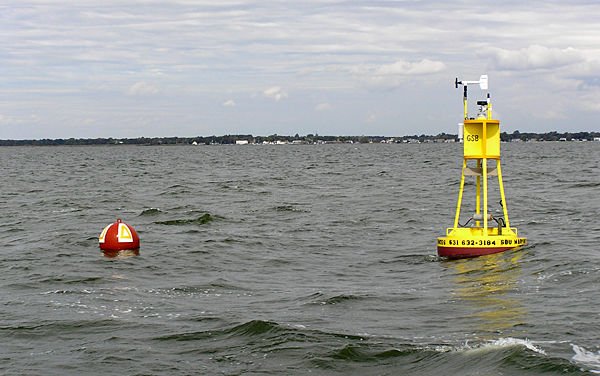BUOY Crack Free Download [Updated]
- lecsufessetp1980
- May 18, 2022
- 3 min read

BUOY PROGRAM ENTRIES: Simulation Settings: Loads the buoyant load. Loads the water mass surrounding the buoy. Loads the buoy weight. Selects the buoy: ''' Single or Double buoy: A single buoy float will rise up through the liquid A double buoy float will rise up through the liquid ************************************************************************************************************************************************** STUDENTS: Construct a single or double buoy from wood. Then, simulate immersion by applying a buoyant load to the base of the buoy. See the program for further instructions. ************************************************************************************************************************************************** ************************************************************************************************************************************************** Problem: Design a program that will calculate the buoy immersion depth. Example: If the buoy has a diameter of 1.2 inches and a weight of 0.1 grams. What is the immersion depth? ************************************************************************************************************************************************** PROGRAM: ************************************************************************************************************************************************** TYPE: main TYPE: menu TYPE: printout TYPE: entry TYPE: user TYPE: end INPUTS: load_type (integer): Type of load. load_status (integer): Status of load. load_weight (float): Weight of load. load_buoy (integer): Type of load. load_buoy_status (integer): Status of load. load_buoy_weight (float): Weight of load. load_mul (float): load_mul_status (integer): Status of load. load_mul_weight (float): Weight of load. load_mul_cst (float): load_mul_cst_status (integer): Status of load. load_mul_cst_weight (float): Weight of load. load_dur_type (integer): load_dur_type_status (integer): Status of load. load_dur_type_weight (float): Weight of load. load_dur_type_cst (float): load_dur_type_cst_status (integer): Status of load. load_dur_type_cst_weight (float BUOY Crack+ Download 1a423ce670 BUOY Crack + 1. The program must be run from within a K-Proc (a KDP version is included). 2. The program must be set for the program to work with the largest K-Proc in memory. 3. The buoy must be assumed to be the rectangular prism used for the immersion calculations; a round weight (e.g., lead, metal, steel) must be positioned at the center of gravity of the buoy. The buoy should be on a flat surface with its long axis parallel to the horizontal and to the line of sight, although a slight curve is permissible. 4. The orientation of the program's axes (i.e., the orientations of the X, Y, and Z axes) may be reversed from those of the axes of the K-Proc. The program should work with KDP's reference frames reversed with respect to its usual frames. 5. Calibration of the program is accomplished by running the program, positioning the weight at the buoy's center of gravity, and observing the buoy's depth in the liquid as the weight is raised or lowered. 6. The orientation of the weight's long axis should be oriented along the vertical axis of the K-Proc; if the program is run in an unconventional manner, buoy immersion depth will be an inaccurate measurement of the true immersion depth. How does it work? 1. The program estimates the volume of the buoy below the liquid surface. This volume (Vbuoy) is calculated by multiplying the buoy's width (wbuoy), its length (lbuoy), and its depth (dbuoy). Then, the upward buoyant force is estimated using a relationship (see Note) that relates the weight (weight) of the buoy to the volume (Vbuoy). This weight is placed in the center of gravity (CG) of the buoy. 2. The buoy is positioned in the liquid, with its long axis parallel to the horizontal and to the line of sight. The program will check for errors in the buoy's orientation and will prompt the user for further corrections. 3. The buoy is moved until the upward buoyant force is equal to the weight plus any load that the buoy supports. The buoy's position is noted. If the buoy sinks more deeply than expected, the program calculates a new Vbuoy value, adjusts the buoy's position, and repeats the calculation. 4. A final, floating buoy depth reading is returned as a data file. Note: (1 What's New In BUOY? System Requirements For BUOY: Input: A compatible Web Cam (or a webcam app like Cheese). A Windows XP/Windows 7/Windows 8/Windows 10 OS. A SD Card. Instructions: How to install?: Read and watch this video on how to install Stellarium on your computer. Have fun exploring the Galaxy and look up at the sky! Optional) You can also watch The Star Show where I discuss the latest updates, New Features and Bugs for Stellarium! [Note: Stellarium runs on Linux
Related links:



![Quick Pad 2007 Crack Activation [Win/Mac]](https://static.wixstatic.com/media/371d5b_4d0c498196084f3ba29c1cfe2d25a4b8~mv2.jpeg/v1/fill/w_580,h_435,al_c,q_80,enc_avif,quality_auto/371d5b_4d0c498196084f3ba29c1cfe2d25a4b8~mv2.jpeg)
![Grid Monitor Viewer Crack Serial Key [2022]](https://static.wixstatic.com/media/371d5b_5e5ffcc6b74f4f6285afe7f4cbcd75f8~mv2.png/v1/fill/w_270,h_196,al_c,q_85,enc_avif,quality_auto/371d5b_5e5ffcc6b74f4f6285afe7f4cbcd75f8~mv2.png)

Comments